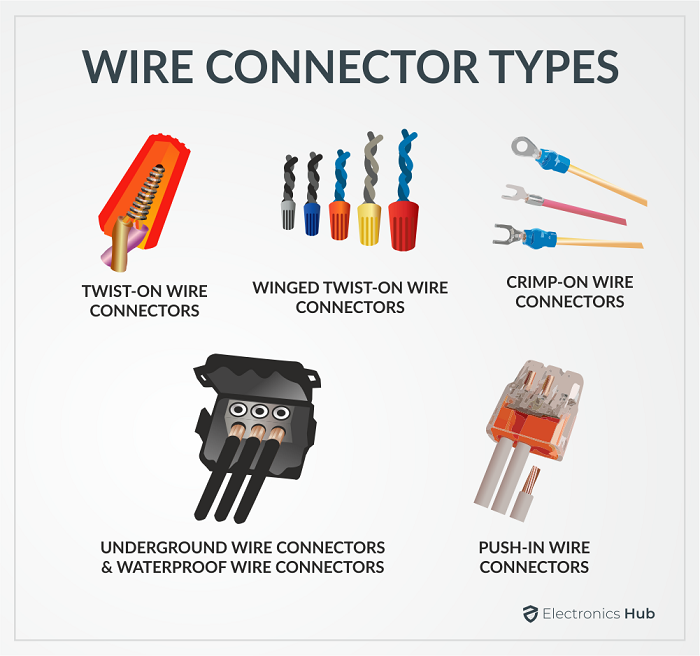Wire connectors are utilized to connect two or more wires to a terminal or object, such as a switch, outlet, or lighting fixture. There are various kinds of wire connections, such as twist-on and wire nuts.
Residential, commercial, and industrial settings all require wire connections in electrical wiring applications. They are a crucial part of any electrical system because they enable the connection of wires securely and safely, which is necessary for the transmission of power.
In this article, we’ll make you go through the different wire connector types and their working. So, let’s dive into it without any further ado.
Outline
ToggleWorking of Wire Connectors
When two or more wires are connected securely and reliably, electricity can freely flow between them. This is how wire connectors function. While many wire connectors function in various ways, the majority either enclose the wires in a protective shell or exert pressure to hold the wires in place.
For example, wire nuts are frequently used to join two or more wires. When using a wire nut, the stripped ends of the wires are twisted together before the wire nut is screwed onto them, holding the twisted wires firmly in place.
No matter what kind of wire connector is employed, the objective is always to provide a strong and trustworthy connection between the wires so that electricity can flow.
Depending on how different wire connectors function, they are classified into the following types:
1. Twist-On Wire Connectors
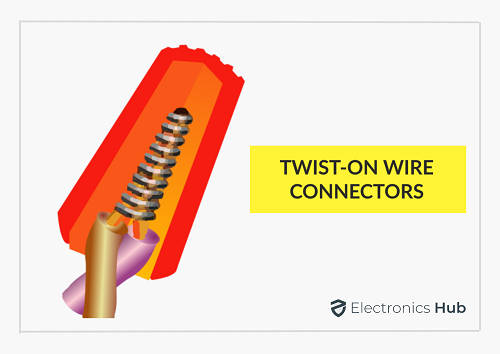
Before using twist-on wire connectors, you must remove the insulation from the wires you intend to connect. After twisting the bare wires together, you attach the wire connection to the twisted wires. The connector’s internal spring-loaded mechanism will clamp down on the wires, holding them in place and forming a tight connection. Twist-on wire connectors are widely used in a variety of electrical wiring applications, including residential, commercial, and industrial settings.
They are an easy and convenient way to connect wires and do not require special tools or equipment. However, it is important to make sure that the wire connector is properly installed and tightened to ensure a secure connection.
2. Winged Twist-On Wire Connectors
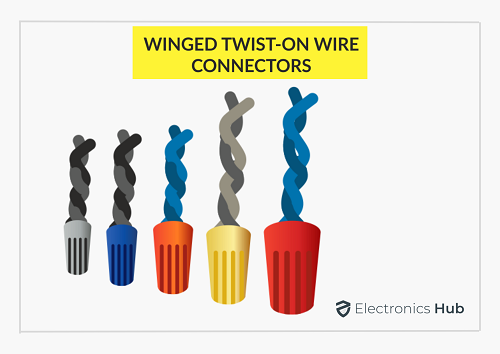
Before using winged twist-on wire connectors, you must remove the insulation from the ends of the wires you want to connect. The naked wires are twisted together, and the winged wire connector is twisted onto the wires. The connector’s wing form makes it simple to tighten it manually, resulting in a reliable connection.
Wing-twist-on wire connectors are frequently employed in a wide range of electrical wiring applications, including in residential, commercial, and industrial settings. They don’t need any specialized tools or equipment, making them a simple and practical method of connecting wires. To guarantee a secure connection, it is crucial to make sure the wire connector is placed correctly and tightened.
3. Crimp-On Wire Connectors
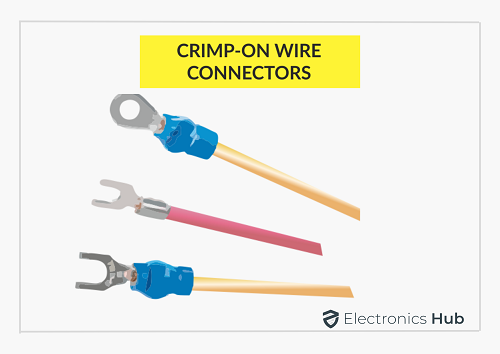
Before using crimp-on wire connectors, you must remove the insulation from the end of the wire you want to connect. The wire is then inserted into the connector, and the connector is then clamped onto the wire using a crimping tool. The connector is deformed by the tool’s gripping action, which makes the connection between the wire and the connector secure and trustworthy.
There are several applications for crimp-on wire connections in electrical wiring, including commercial and residential areas. They don’t need any specialized tools or equipment, making them a simple and practical method of connecting wires. But to establish a solid connection, it’s crucial to make sure the wire connector is placed and crimped correctly.
4. Underground Wire Connectors & Waterproof Wire Connectors
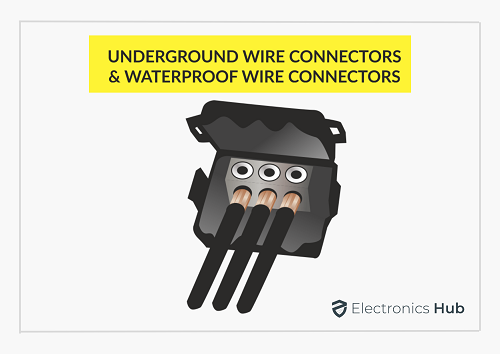
Underground wire connectors and waterproof wire connectors work in the same way as regular wire connectors. Still, they are specifically designed to provide a secure and reliable connection in outdoor or underground wiring applications. They may have additional features such as seals or gaskets to help protect against water, moisture, and other environmental elements.
Underground wire connectors and waterproof wire connectors are used in a variety of electrical wiring applications, including outdoor lighting, irrigation systems, and other outdoor electrical systems. They are an essential component of any outdoor electrical system, as they allow wires to be securely and safely connected to transmit electricity.
5. Push-In Wire Connectors
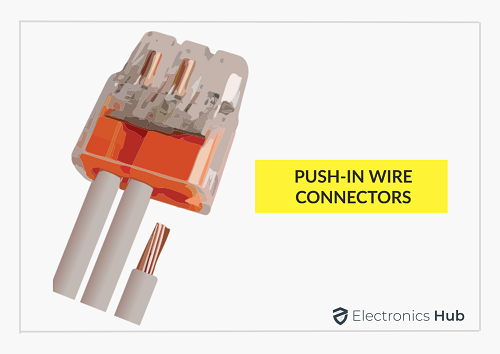
Before using push-in wire connectors, you must remove the insulation from the ends of the wires you want to connect. The bare wires are then inserted into the connector, and a spring-loaded mechanism pushes them into position, retaining them there and forming a safe connection.
Push-in wire connections are frequently utilized in a wide range of electrical wiring applications, including in residential, commercial, and industrial settings. They are an easy and convenient way to connect wires and do not require special tools or equipment. However, it is important to make sure that the wire connector is properly installed and tightened to ensure a secure connection.
Conclusion
Wire Connectors aid the flow of electricity without letting you overwhelm the process. You can use the type of wire connectors according to your requirements. We have described above the main five types of wire connectors and how they work. But if you still have some queries, you may ask us in the comments below!

